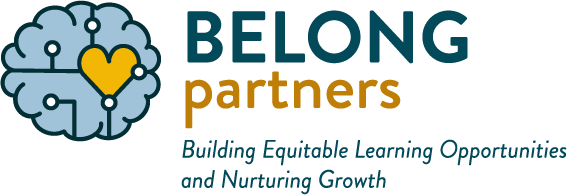Hey parents! Does it feel like a lot is on your plate? In addition to juggling jobs, 24/7 parenting, and other responsibilities, in the era of COVID 19 we are also on-line-learning tech support, electronic assignment submission monitor, virtual classroom parent volunteer, and teacher email tracker. That’s A LOT of jobs.
In the back of our minds, maybe we’re anxious — will our kids be ready for the next grade level? Take a breath, grab a cup of tea, and take a minute for inspiration.
The term “Inspired Learning” was coined by Zaretta Hammond, a national education consultant and author of Culturally Responsive Teaching and the Brain. Recently, a number of Sound Discipline facilitators attended Ms. Hammond’s Inspired Learning workshop. Here are just a few of the gems that inspired us and that, we hope, inspire you too.
You’ve probably heard this before; as parents, we are our child’s first teacher. This was true before the pandemic, but now, more than ever, we are actually our child’s teacher! As overwhelming as this is – and it is overwhelming – our greatest asset as parents is our strong relationship with our child. More than anyone, we understand intimately how our children approach learning, and what it takes for them to thrive.
Academic rigor is important. But, as Hammond emphasizes, when we approach teaching from the standpoint of pushing students, and when education becomes about conforming to a single approach, it does not spark the parts of the brain that support actual integration of the subject matter. The job of a teacher, then, is to be a coach — to see the child as capable, to ask questions that reinforce that child’s intrinsic competence, and that build confidence. Our job is to help our child “carry the cognitive load.”
What is that? In the traditional school model, the teacher is the teacher — the source of knowledge and learning. The student is the empty vessel whose job is to receive what teachers are delivering. In this mode, the teacher carries the cognitive load of figuring out how to get a kid to learn. The child is a passive participant. This approach does not encourage the child to take responsibility for their own learning. Children lose confidence in their abilities. Worse, learning is not relevant to the cultures and specific lived experience of the diversity of students.
Parents have a unique opportunity through daily life and play to help our children translate learning – math, language arts, social studies, science – to our children’s lived experience and cultural context. Learning can happen everywhere and with everything.
Here are some ideas to try with your child.
Activities
Use Curiosity Questions and conversations to spark learning connections
- Why do you think this is important?
- How is this like something you already know about or know how to do?
- What is interesting to you about this?
- What might make it more interesting to you?
Increase Word Awareness
- Find and expand ways to say a word. Example: “Cook” = Bake, grill, steam sauté, roast, fry, toast. Collect those words by having your child write them on posters, in a book, on a paper chain, in a journal etc.
- Encourage word games like Scrabble, Taboo, Balderdash, Banana-grams and others
- Write limericks, haiku other simple poetry forms, or hip-hop lyrics
- If your child encounters a word they don’t know, encourage them to “collect” it and learn about it. Keep the words in a word book. Check out The Word Collector by Peter Reynolds.
Connect to Interests
- What are your child’s strengths? What are their passions? Superheroes? Trains? Nature? Use these as a jumping off points to talk and explore. What do they want to know? How can they find the answers to their questions? When kids are choosing what to learn it leads to self-motivated learning.
- Take a walk in your neighborhood. Ask, “What is interesting to you? Why is it interesting to you? What are other things you want to know about? What else are you wondering about it?”
Invite your child to research a topic
- Point your child to tools – videos, web sites, TED Talks, books — and strategies to investigate topics that connect with their questions. Videos like Underwater Astonishments by David Gallo, for example.
- Make “learning posters” that list questions the child has, their guesses at the potential answers and then the results of what they have discovered through their research.
- Choose someone to interview. What questions are they curious about? Help set up a video call or phone conversation.
- Ask your child to teach a topic they researched at the kitchen table.
Create Opportunities to Reflect on Learning
- Watch a show or movie together, or read a book, then ask, “What was surprising?”
- Complete this sentence “I used to think____________, now I think___________.”
- Share learning with someone (friend, teacher, grandparent) through phone call video, podcast.
- Doodle, draw, take photos, write a poem, build something using found objects – Support them to make something that builds on what they learned
Resources
- Teach Your Child to Engineer – Fast and Easy, from Akeeba Maze – https://youtu.be/t52aUaym-dE
- Alphabet Scavenger Hunt, from Raising Dragons – https://www.raisingdragons.com/alphabet-scavenger-hunt/
- Kid Yoga, from Preschool Inspirations – https://preschoolinspirations.com/kid-yoga-videos/
- Tons of Fun, Just Simple Lines of Colored Tape, from Hands On As We Grow – https://handsonaswegrow.com/fun-kid-activity-lines-of-colored-tape
- The Word Collector, Peter Reynolds – available along with other recommended books from our website – https://belongpartners.org/books
- Michelle and Barack Obama read The Word Collector for the Chicago Public Library https://www.instagram.com/tv/CALKEzrA_80/?igshid=o7f7xx0wnjkp
- 35 recommended TED Talks for Students, from We are Teachers – https://www.weareteachers.com/ted-talks-students/
- Check out “Tips for Parents and Families” from the Center for the Collaborative Classroom – https://www.collaborativeclassroom.org/collaborative-classroom-guidance-for-remote-learning/
